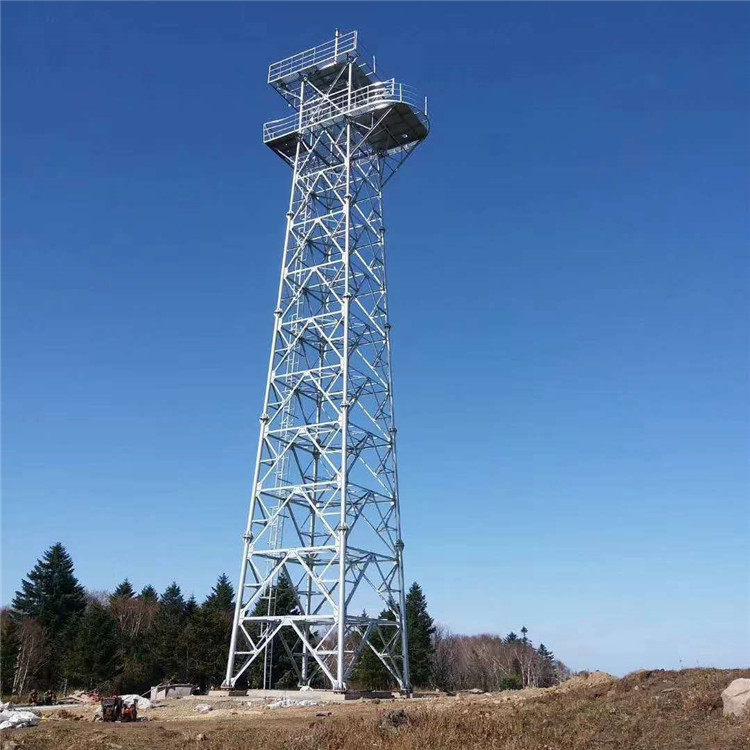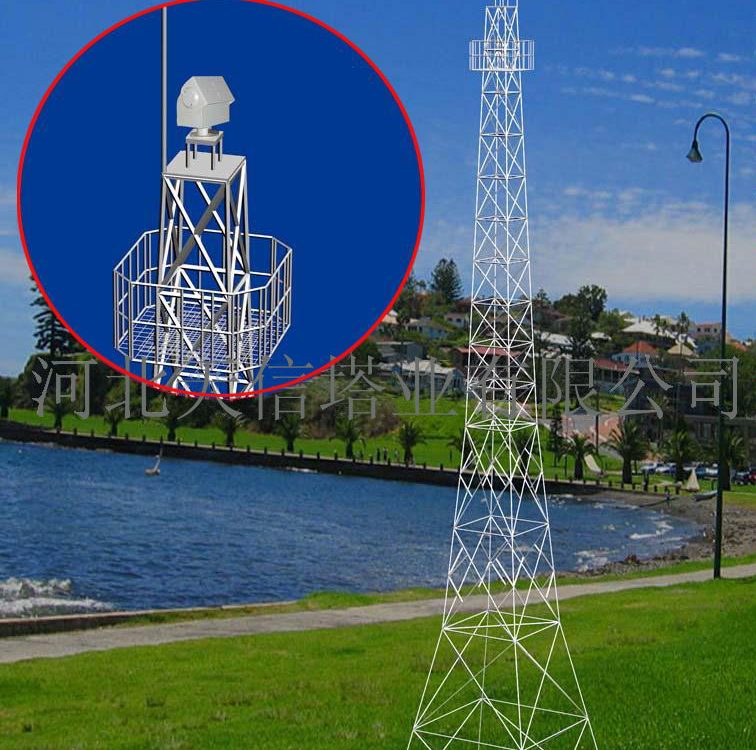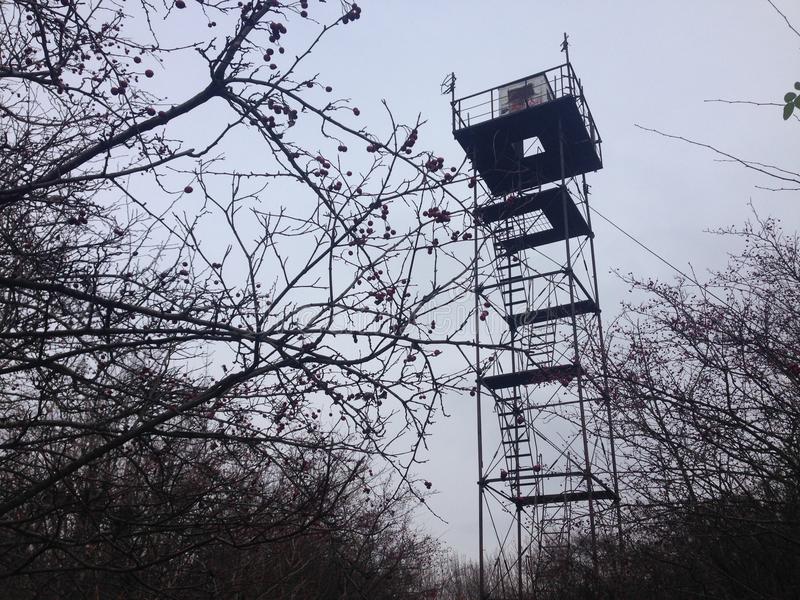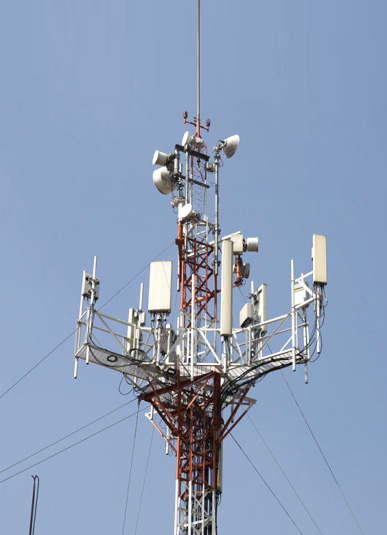
Difference Between Monopole Towers and Microwave Steel Towers
November 24, 2024
4-Legged Angular Electric Transposition Lines Steel Tower
December 2, 2024Forest Fire Observation Monitoring Steel Towers
Forest Fire Observation Monitoring Steel Towers
Introduction
Forest fires are one of the most devastating natural disasters, causing widespread destruction to ecosystems, wildlife, and human settlements. Early detection and monitoring of forest fires are critical to minimizing their impact. Forest fire observation monitoring steel towers play a crucial role in this effort by providing elevated platforms for surveillance, communication, and data collection. These towers are strategically located in forests and high-risk areas to enable early fire detection and efficient response coordination.
This article explores the design, functionality, and importance of steel towers in forest fire observation and monitoring. It also examines the advantages, challenges, and future trends in their development, along with a detailed comparison of their features and applications.
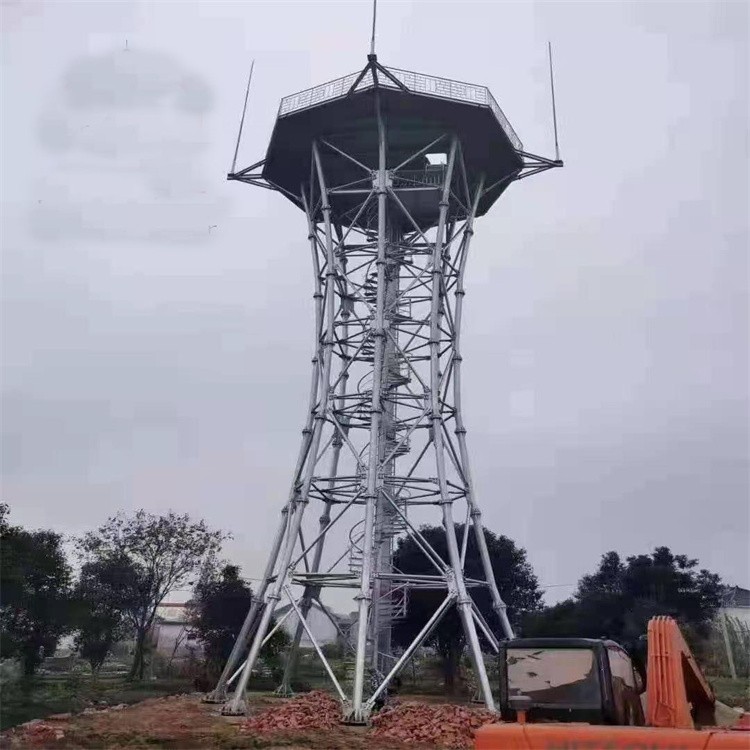
Importance of Forest Fire Monitoring Towers
1. Early Detection of Forest Fires
Steel towers provide a high vantage point, enabling observers or automated systems to detect smoke or flames over large areas. Early detection is critical for:
- Preventing the spread of fires.
- Reducing damage to ecosystems and property.
- Saving lives by enabling timely evacuation.
2. Data Collection and Communication
These towers are equipped with sensors, cameras, and communication systems that:
- Monitor environmental conditions such as temperature, humidity, and wind speed.
- Transmit real-time data to firefighting teams and control centers.
- Facilitate coordination between ground teams and aerial firefighting units.
3. Surveillance of Remote Areas
In remote and inaccessible regions, steel towers serve as permanent observation points, ensuring continuous monitoring of high-risk zones.
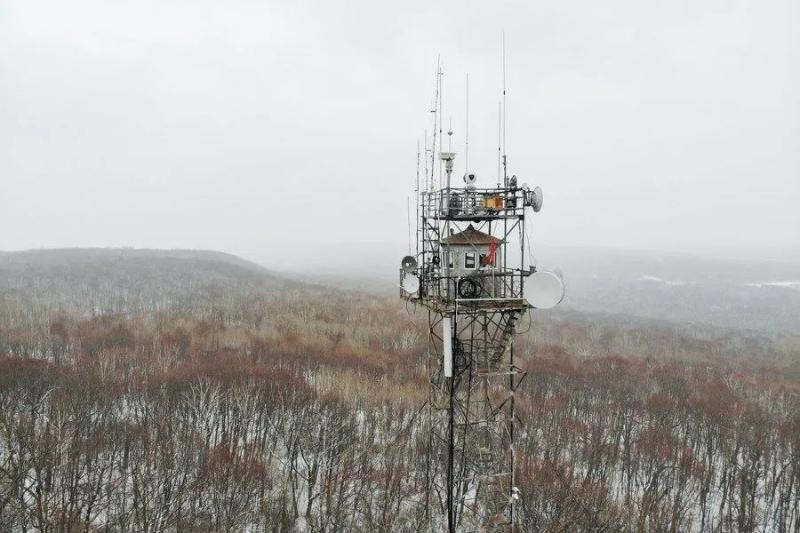
Design and Structure of Forest Fire Observation Steel Towers
1. Structural Design
Steel towers for forest fire monitoring are designed to withstand environmental challenges such as wind, rain, and extreme temperatures. Key design features include:
- Lattice Framework: Provides strength and stability while minimizing material usage.
- Height: Typically ranges from 20 to 50 meters, depending on the terrain and forest density.
- Platform: An observation deck or platform at the top for mounting equipment or accommodating personnel.
- Foundation: A reinforced concrete base to ensure stability and resistance to seismic activity.
2. Materials
- Structural Steel: The primary material used for its strength, durability, and resistance to environmental factors.
- Corrosion Protection: Galvanized coatings or weather-resistant paints are applied to prevent rust and extend the tower’s lifespan.
3. Equipment
Steel towers are equipped with advanced technology for fire detection and monitoring:
- Cameras: High-resolution and thermal imaging cameras for detecting smoke and heat.
- Sensors: Environmental sensors to monitor temperature, humidity, and wind conditions.
- Communication Systems: Radios, antennas, and satellite links for real-time data transmission.
- Solar Panels: For powering equipment in remote areas.
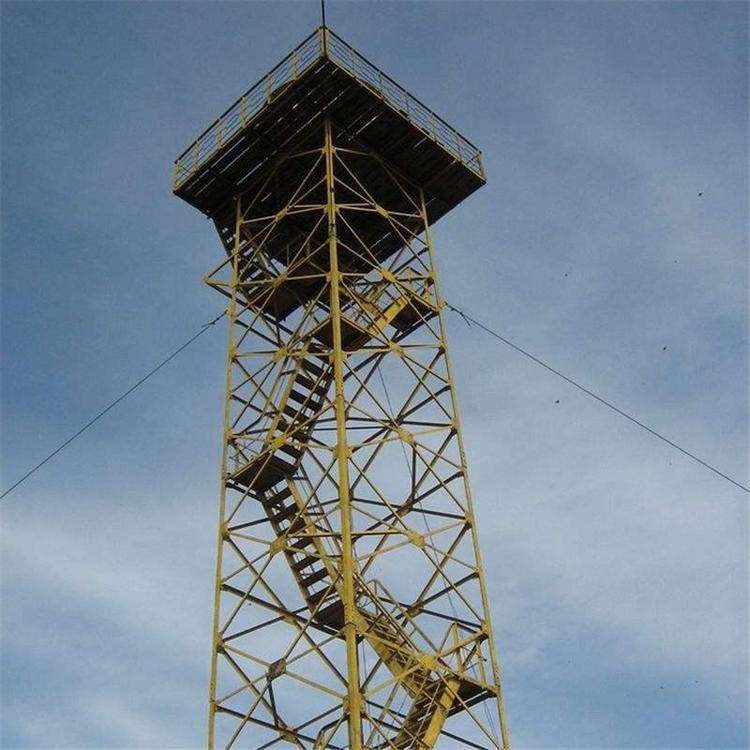
Applications of Forest Fire Observation Steel Towers
1. Early Fire Detection
- Monitoring high-risk zones for signs of smoke or flames.
- Sending alerts to firefighting teams for rapid response.
2. Environmental Monitoring
- Collecting data on weather conditions and forest health.
- Supporting research on fire behavior and prevention strategies.
3. Coordination of Firefighting Efforts
- Serving as communication hubs for ground and aerial firefighting units.
- Providing a vantage point for directing firefighting operations.
4. Wildlife Protection
- Monitoring wildlife movements and behavior during fire events.
- Assisting in evacuation and conservation efforts.
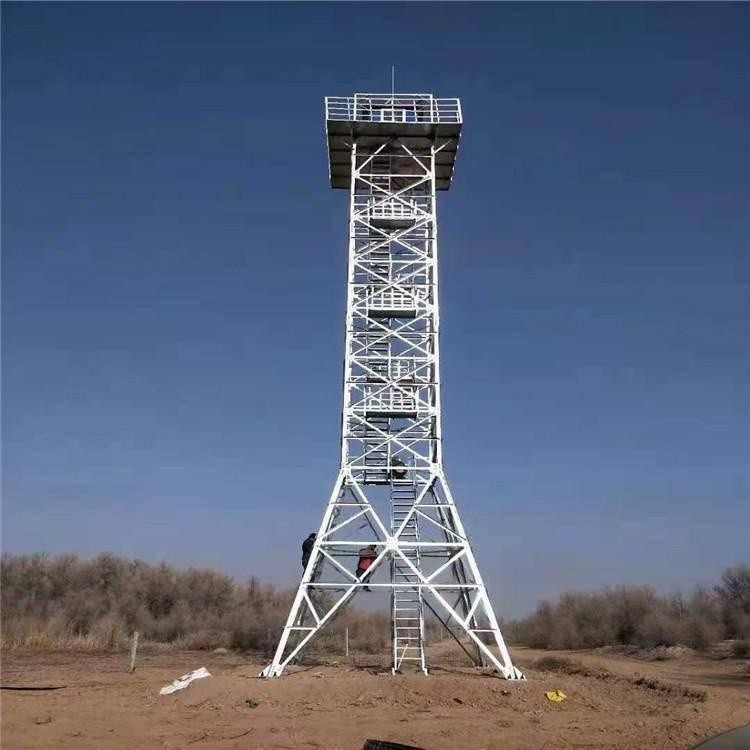
Advantages of Steel Towers for Forest Fire Monitoring
| Advantage | Description |
|---|---|
| Durability | Steel towers are highly durable and can withstand harsh environmental conditions. |
| Height Advantage | Elevated platforms provide a clear line of sight over large forested areas. |
| Customizability | Towers can be designed to accommodate various equipment and specific requirements. |
| Low Maintenance | Galvanized steel and protective coatings reduce maintenance needs. |
| Cost-Effectiveness | Long lifespan and minimal maintenance make steel towers a cost-effective solution. |
Challenges in Using Steel Towers for Forest Fire Monitoring
Despite their advantages, steel towers face several challenges:
1. Environmental Impact
- Construction of towers in forests can disrupt ecosystems and wildlife habitats.
- Careful site selection and minimal land clearing are necessary to mitigate impact.
2. Vulnerability to Extreme Weather
- High winds, lightning, and storms can damage towers or disrupt monitoring equipment.
- Lightning protection systems and robust designs are essential.
3. Cost of Installation
- Initial construction and equipment installation can be expensive, especially in remote areas.
4. Maintenance in Remote Areas
- Regular inspections and maintenance can be challenging in inaccessible regions.
5. Technological Limitations
- Reliance on cameras and sensors may lead to false alarms or missed detections due to dense foliage or poor visibility.
Comparison with Other Fire Monitoring Methods
| Aspect | Steel Observation Towers | Aerial Drones | Satellite Monitoring |
|---|---|---|---|
| Coverage Area | Localized, depends on tower height | Wide coverage, flexible deployment | Global coverage, limited resolution |
| Real-Time Monitoring | Continuous monitoring | Intermittent, depends on drone battery | Delayed due to satellite orbit |
| Cost | High initial cost, low maintenance | Moderate cost, recurring expenses | High cost for satellite operation |
| Environmental Impact | Moderate, requires land clearing | Minimal | Minimal |
| Reliability | High, with proper maintenance | Limited by weather and battery life | Limited by cloud cover and resolution |
Case Studies: Steel Towers in Forest Fire Monitoring
Case Study 1: California Wildfire Monitoring
- Location: Sierra Nevada forests, California, USA.
- Tower Features: 30-meter steel towers equipped with thermal cameras and weather sensors.
- Outcome: Early detection of smoke allowed firefighting teams to contain fires before they spread, reducing damage to nearby communities.
Case Study 2: Australian Bushfire Observation
- Location: Blue Mountains, New South Wales, Australia.
- Tower Features: 40-meter steel towers with solar-powered communication systems.
- Outcome: Real-time data transmission enabled efficient coordination of firefighting efforts, saving lives and property.
Future Trends in Forest Fire Monitoring Towers
1. Integration with Artificial Intelligence
- AI algorithms can analyze data from cameras and sensors to detect fires more accurately and reduce false alarms.
2. Hybrid Monitoring Systems
- Combining steel towers with drones and satellite monitoring for comprehensive coverage and redundancy.
3. Sustainable Construction
- Use of eco-friendly materials and designs to minimize environmental impact during construction.
4. Advanced Communication Systems
- Integration of 5G technology for faster and more reliable data transmission.
5. Autonomous Operations
- Development of self-sustaining towers with solar panels and automated maintenance systems.
Cost Analysis of Steel Towers for Forest Fire Monitoring
| Cost Aspect | Description |
|---|---|
| Construction Cost | Includes materials, foundation, and labor. |
| Equipment Cost | Cameras, sensors, communication systems, and solar panels. |
| Maintenance Cost | Periodic inspections, repairs, and equipment upgrades. |
| Operational Cost | Energy costs (minimal with solar power) and data transmission expenses. |
| Overall Cost | High initial investment, but cost-effective over the long term. |
Environmental Impact of Steel Towers
Positive Impacts:
- Fire Prevention: Early detection reduces the environmental damage caused by wildfires.
- Data Collection: Supports research on forest conservation and fire prevention.
Negative Impacts:
- Habitat Disruption: Construction may disturb local wildlife and vegetation.
- Visual Impact: Towers may alter the natural landscape.
Mitigation Strategies:
- Careful site selection to minimize habitat disruption.
- Use of camouflaged designs to blend with the environment.
Conclusion
Forest fire observation monitoring steel towers are indispensable tools for early fire detection and environmental monitoring. Their durability, height advantage, and ability to support advanced equipment make them ideal for high-risk forested areas. Despite challenges such as environmental impact and installation costs, steel towers remain a cost-effective and reliable solution for wildfire management.
As technology advances, the integration of AI, hybrid monitoring systems, and sustainable construction practices will further enhance the effectiveness of these towers. By investing in steel towers and complementary technologies, we can protect forests, wildlife, and communities from the devastating effects of wildfires.


